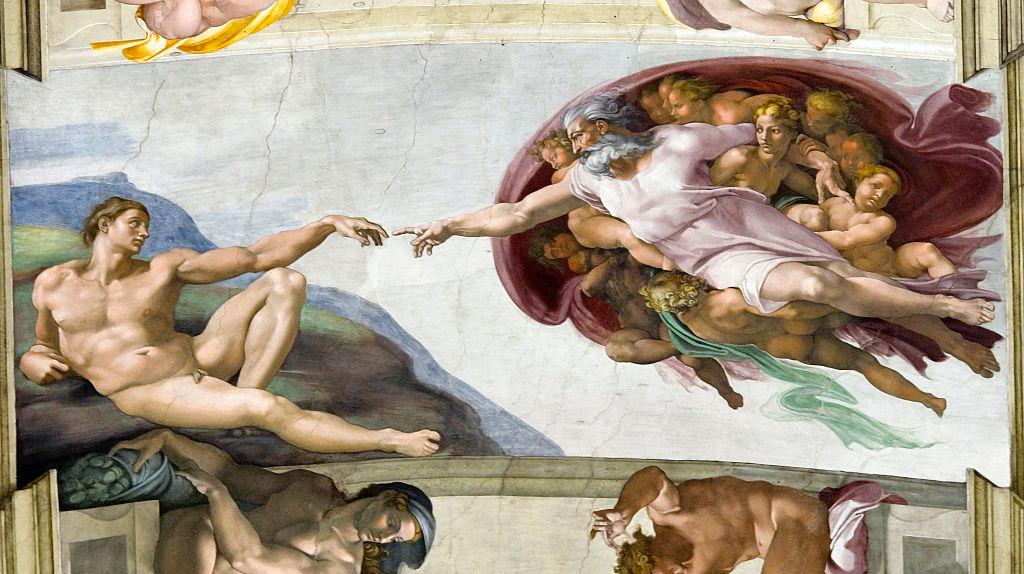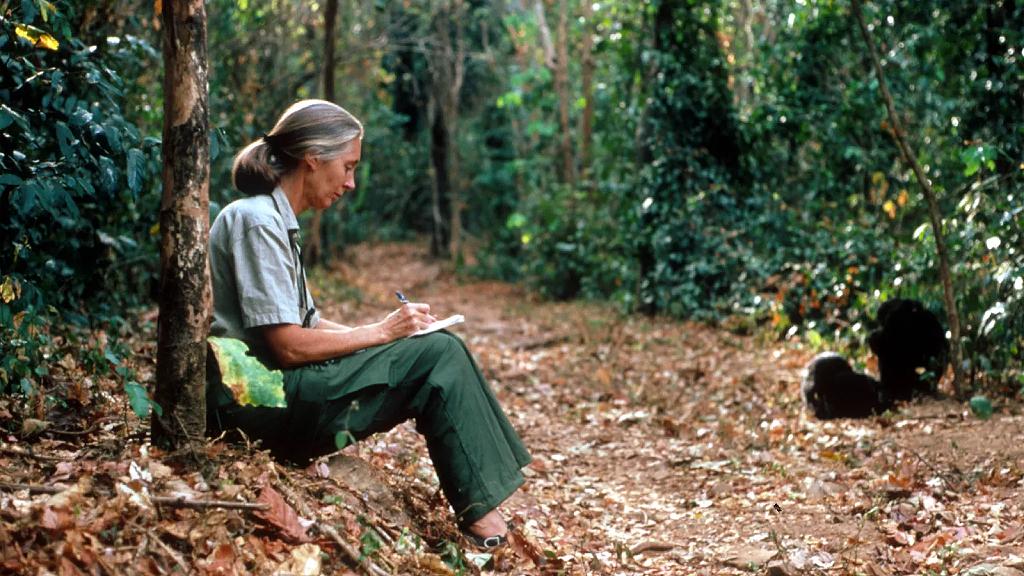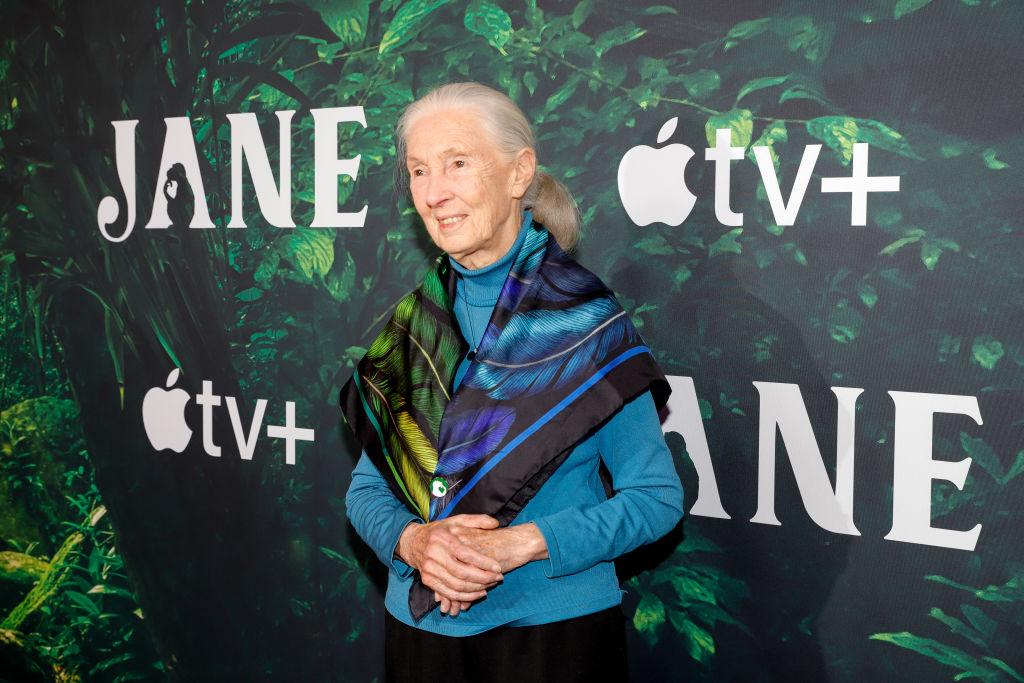The death at 91 years of Jane Goodall, the famous ethologist who revolutionized the way we understand the behavior of chimpanzees, leaves the world without one of the minds that best managed to understand the animal world. Few images captured their deep connection with nature as well as the one her husband took in 1964 with a baby chimpanzee.
On July 14, 1960, Jane Goodall, 26, arrived by boat on the shores of Lake Tanganica, in Tanzania. There, in what is now the Gombe Stream National Park, began its innovative scientific research on the behavior of chimpanzees.
Until then he was a secretariat student without a degree in Science, and says he observed his wild subjects with an open mind and without preconceived ideas.
Controversly at that time, he challenged the conventions by giving those chimpanzees names instead of numbers.
An image of Goodall during this time captured its fresh approach, challenged scientific norms and became one of the most recognizable photos in the world.
His late husband, Dutch photographer Hugo van Lawick, went to Gombe in 1962, Where thousands of photographs took of Goodall.
But it was in 1964 when he took what became one of Goodall’s most iconic photographs with a baby chimpanzee known as Flint.
In the photo, Goodall is seen crouched and extending his right arm towards Flint, the first chimpanzee who was born in Gombe after his, while he extends his left arm towards her.
As Goodall told BBC Future, this was long before the era of digital photography, so he had to wait a while before being able to see the printed images.
“They spent a couple of months or more before there was a safe way to send scrolls exposed to National Geographic for processing, and then another waited while they sent the impressions to Kigoma,” he recalled.
“When I saw her, although I didn’t realize that she would become iconic, she made me think of the painting of Michelangelo de Dios approaching man.”

“A true pioneer”
Photography was first published in National Geographic magazine in December 1965.
Another photo of Goodall studying the Gombe chimpanzees was on the cover and was published as part of the Van Lawick photos entitled “New discoveries among the chimpanzees of Africa.”
That same year, National Geographic premiered “Miss Goodall and the wild chimpanzees”, the first of many documentaries that show their research.
The photo, together with the Van Lawick documentary “People of the Forest: The Chimps of Gombe“,” He forced science to abandon the idea that humans were the only syndoring beings with personality, mind and emotions, “said Goodall.
He added that they taught it when he began studying at the University of Cambridge in 1962.
“Therefore, [esta imagen] He brought a completely new way of understanding who animals are and showed that humans are part of the animal kingdom. ”
Goodall was the first person to notice that the chimpanzees took rigid briznas of grass and then put them in holes in the mounds of termites to catch and eat these insects.
Until then, it was believed that the use of tools such as this distinguished humans from all other animals.

Mark Wright, scientific director of the WWF Benefit Conservation Organization, says that Goodall was “a true pioneer” in many ways.
But it was that photograph that helped to recognize the importance of a female perspective within the scientific research community, he says.
“She was a young woman who said that women were equally able to make a first class investigation into the land.
“Until then, it had been a very dominated atmosphere. And then there was a succession of high -profile women doing this type of work.”
Gilbert M Grosvenor, former president of the National Geographic Society, has also argued that “Goodall’s pioneering path for other primatologists is possibly their greatest legacy.”
“During the last third of the twentieth century, Dian Fossey, Birute Galdikas, Cheryl Knott, Penny Patterson and many more women have followed it,” wrote in the biography of the primatologist of the Jane Goodall Institute.
“Certainly, women now dominate long -term primates behavior studies worldwide.”
Librepentora
When the photo was taken in 1964, Goodall was immersed in life in Gombe, beginning to understand the chimpanzees that he was studying and slowly accumulating his observations about his behavior.
That first -hand experience has always been his priority, says Wright.
“That photo reminded us that for much of this work, there is no other alternative than being on the ground.
“Many studies were conducted in zoos or Safari parks: it is necessary to be in the field to really understand natural behavior.
“And you have to do that in the long term, you can’t just stay a couple of weeks. She reinforced that.”
Goodall went east of Africa without any formal title and lived in Gombe for more than two decades, dedicating his life to the study of chimpanzees generations.
Wright says that this photo transmits a powerful message to people who have not studied science but want to get involved in research because, sometimes, an open mind is the best starting point.
Goodall “was not someone with a laboratory robe, so more people could be reflected.”
“And since I didn’t have a lot of formal training, I could see how a free thinker and then interpret.”

Eager to open the world of scientific research to all, Goodall has inspired many people to study primatology on the field.
Since 1960, the Gombe Stream Research Center has published More than 482 scientific research and postgraduate thesis works On the health and behavior of chimpanzees, with hundreds of scientists studying there.
Together with his vast body of documentaries, books and articles by National Geographic, Goodall’s photographs with Flint pointed out the importance of conserving individual animals.
“Previously, everything was about saving species: individuals were not important. Scientific thought changed,” said Goodall.
A 2021 review of the American anthropologist Michael Lawrence Wilson summarizes the many findings of the research carried out in Gombe and reflect on the impact of Chimpanzees research efforts initiated there by Goodall.
“Gombe exemplifies what has become a standard approach to primates field studies: collaborative research and collection of systematic information about identified individuals, followed throughout his life,” he concludes.
That photo made Goodall feel a certain nostalgia.
“It reminds me of a magical era in which I knew each Chimpanzee in particular, as if they were members of my family.
“I observed the development of Flint, since he was a baby to becoming a spoiled brat, always supported by his older sister or protected by one of his older brothers if another monkey accidentally (or sometimes deliberately!) He hurt him.
“That image makes me think about the best days of my life,” he told the BBC.
The closeness between Goodall and Flint in photography also reflects the culture of the time, says Wright, noting that scientists now remain further from the animal subjects they are observing.
“But she was doing something that hadn’t really done before … I took my hat before her. Her work was absolutely innovative.”
Above all, the image shows the genuine love of Goodall, says Wright.
“There is warmth and affection for the species he is studying. There is also love for Gombe: she found her place.”
For Goodall, it was his simple connection with Flint that made this image so captivating.
“I suspect that it was the appeal of that little baby who approached with such confidence: a real bond between humans and chimpanzees. At least, that is why he is so powerful to me!”
*The Jane Goodall Institute points out that physical contact with wild animals is no longer considered appropriate and says that “it does not support the management, interaction or proximity to chimpanzees or other wild animals“
*This is an update of an article published by BBC Future. AI want to read the original article, in English, Click here.

Click here To read more BBC News World Stories.
You can also follow us in YouTube, Instagram, Tiktok, X, Facebook And in our new WhatsApp channelwhere you will find last minute news and our best content.
And remember that you can receive notifications in our app. Download the latest version and act.
